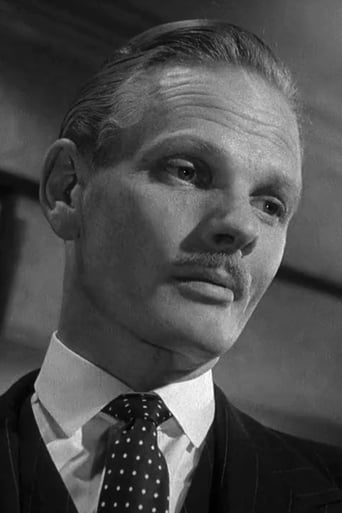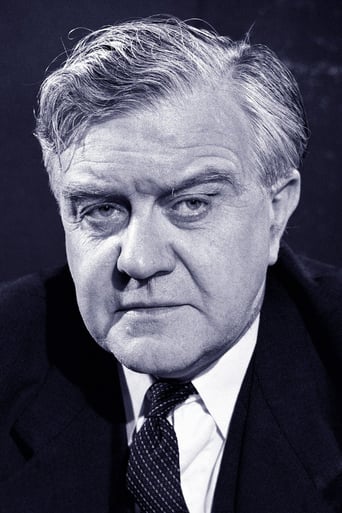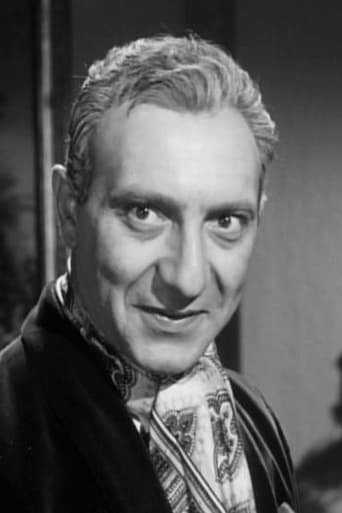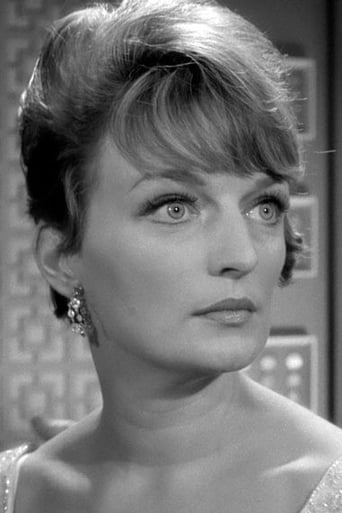Ceticultsot
Beautiful, moving film.
StyleSk8r
At first rather annoying in its heavy emphasis on reenactments, this movie ultimately proves fascinating, simply because the complicated, highly dramatic tale it tells still almost defies belief.
PiraBit
if their story seems completely bonkers, almost like a feverish work of fiction, you ain't heard nothing yet.
Fleur
Actress is magnificent and exudes a hypnotic screen presence in this affecting drama.
hwg1957-102-265704
Filmed in 'Strangloscope!' no less 'The Stranglers of Bombay' is a Hammer film directed by their usual director Terence Fisher about the historical Thugee cult in India. People and goods have been going missing from caravan trails and the officers of the East India company are worried. That is Colonel Henderson and the merchants are worried about the goods but Captain Harry Lewis is more worried about the missing people, overwhelmingly Indian. He comes to realise that devotees of the goddess Kali are responsible and begins to track them down. It is an entertaining film that gallops along to a good (but rushed ending) taking in murder, gore, suspense and excitement. Guy Rolfe is solid as Captain Lewis and George Pastell scarily convincing as the High Priest of Kali. They are supported well by Allan Cuthbertson, Andrew Cruickshank, Jan Holden and Marne Maitland (who actually was born in India.) Splendid support is also given to the frontally blessed Marie Devereux, thankfully. In minor parts are Roger Delgado and Warren Mitchell. Hammer regulars James Bernard provides an excellent musical score and Roy Ashton supplies suitably effective make-up. Good use is made of English locations and perhaps it might have been better in colour? Possibly,Apparently a few minutes were cut from the film though the 76 minute version I saw was adequate. There is supposedly more Marie Devereux and more mongoose/snake footage which is a shame as I think you can never have enough mongoose scenes in a film.
Scott LeBrun
In 19th Century India, a vicious cult dubbed the Thuggees is terrorizing their own countrymen, robbing and killing with impunity. Harry Lewis (Guy Rolfe), a captain with the East India Company, knows that there's a problem. He's noted the mass disappearances of citizens over time, but his superior officer (Andrew Cruickshank) doesn't take him seriously. Harry gets personally involved when his faithful servant, Ram Das (Tutte Lemkow), goes missing while in search of his brother.Hammer stalwart Terence Fisher directs with his customary efficiency. Fisher keeps the entertaining story moving along nicely, taking advantage of the exotic setting and creating some truly wonderful atmosphere. Many of the popular Hammer talents strut their stuff, including the cinematographer, Arthur Grant, who shoots "The Stranglers of Bombay" in beautiful widescreen black & white. Bernard Robinson also works wonders with the production design. Written by David Zelag Goodman ("Straw Dogs", "Logan's Run", "Eyes of Laura Mars"), this is a reasonably absorbing adventure. Some viewers might take offence at the portrayal of the Thuggee cult (just as people did when "Indiana Jones and the Temple of Doom" came along 25 years later). But the suspense is undeniable at times and it's cute to see a mongoose play a part in the action when Lewis's life is threatened by a cobra. It's a truly chilling moment when Ram Das is murdered in cold blood by someone close to him.Excellent performances are a real plus. Rolfe is a highly engaging hero, and among the other Hammer repertory players here, George Pastell shines. Pastell has one of his most substantial roles as the villainous High Priest of Kali. Allan Cuthbertson is amusing as the arrogant, ineffective Captain Connaught-Smith. Marne Maitland, Paul Stassino, Roger Delgado, John Harvey, Warren Mitchell, Michael Nightingale, Ewen Solon, and David Spenser all do fine jobs in their respective roles.Some viewers may also be put off by the rather vivid violence, but this film still sizes up as an agreeable diversion for Hammer fans.Seven out of 10.
Leofwine_draca
THE STRANGLERS OF BOMBAY is one of Hammer's last black-and-white movies but, being set in the exotic locales of 19th-century India, it really needs some colour to liven it up. As it stands it's a rather lifeless and stagy affair, clearly hampered by a low budget and an almost singular lack of action, incident and spectacle. Hammer would later do the whole pulp adventure type format much better with the likes of the truly gripping TERROR OF THE TONGS.The story sees the British East India Company finding themselves menaced by sinister members of a thuggee cult with a predilection for strangulation. Said cult members are headed by the memorably zany George Pastell, whose role seems to have provided inspiration for Spielberg in INDIANA JONES AND THE TEMPLE OF DOOM. Watch out for an uncredited Roger Delgado (DR WHO's Master) as an evil henchman and Marie Devereux as a mute but arresting thuggee follower.All this is fair enough, but the film really lets itself down when it comes to the lifeless characters. Guy Rolfe's heroic leading man is adequate, but way too much screen time is given over to the stuffy character Allan Cuthbertson plays. The whole narrative stagnates for minutes on end only to be rushed when it comes to the climax. STRANGLERS OF BOMBAY has promise at times, but with the pedigree behind it (such as Terence Fisher's direction) it should have been a lot better than it actually is.
MARIO GAUCI
Watching this, I was reminded all over again just how invigorating the output from Hammer Films was during its heyday; even so, this isn't a horror film as such – and, in fact, has recently been released on DVD through Sony as part of a double-disc 4-movie collection entitled "Icons Of Adventure" (none of which I'd previously watched).The film has a good reputation quality-wise, but it's even better-known as one of the company's grisliest efforts – not that there's excessive bloodshed on display, but director Fisher was certainly able to milk the inherent savagery of British-ruled India for all it was worth (there's plenty of implied physical violence throughout, to be sure, which seems all the more obscene for being triggered by religious fanaticism!). Tying up with this fact, the BBFC (British Board of Film Classification) came down on THE STRANGLERS OF BOMBAY with particular alacrity. Unfortunately, many of the cuts they enforced back then (notably a female hanger-on's ecstatic reaction shots to the violence perpetrated by the titular cult have been all but eliminated, thus rendering her character virtually pointless!) have been retained for the R1 edition…though a scene involving a fight between a mongoose (the hero's pet which saves its master – having fallen prisoner to the vicious stranglers – from certain death at the eleventh hour) and a cobra, reportedly also trimmed by seven seconds, seems intact here! I'm ambivalent about the picture being in black-and-white: admittedly, this allows it a gritty realism unusual for the company – however, at the same time, the lack of color tends to dilute the film's potential for exotic flavor…especially since this would have alleviated its unremitting bleakness somewhat! Incidentally, while the come-uppance of the cult itself feels a bit rushed, this is eventually redeemed by a satisfactory aftermath – wherein a former spiritual leader, now reduced to mere negotiator between his people and Britain's East India Company, gives himself away as an associate of the so-called "thuggees"; similarly devious had been a half-caste officer, whom the hero dealt with personally during a scouting mission for a 'lost patrol'. In any case, THE STRANGLERS OF BOMBAY features one of Hammer's strongest (and most sympathetic) male leads from this era in middle-aged Guy Rolfe – though he's matched by an intense display of villainy from George Pastell as the High Priest of the strangling cult; on the other hand, Allan Cuthbertson's overbearing snob of an upper-class officer fails to rise above mere cliché! By the way, it's always a pleasure to see the names of all the Hammer stalwarts among the credits – with cinematographer Arthur Grant and composer James Bernard chief among them, they deliver exemplary work on this picture as well; having said that, THE STRANGLERS OF BOMBAY was uniquely scripted by an American – David Zelag Goodman – whose best work (Sam Peckinpah's STRAW DOGS [1971]), coincidentally, would also be filmed in England and prove a censorship milestone!








